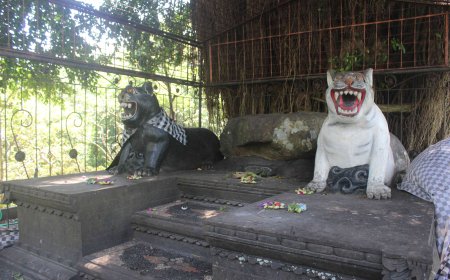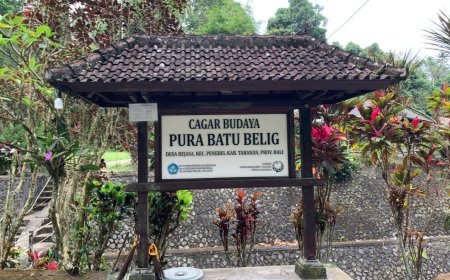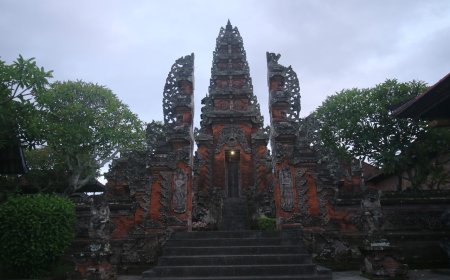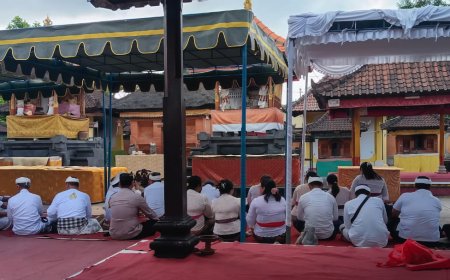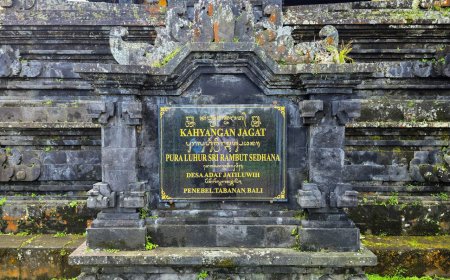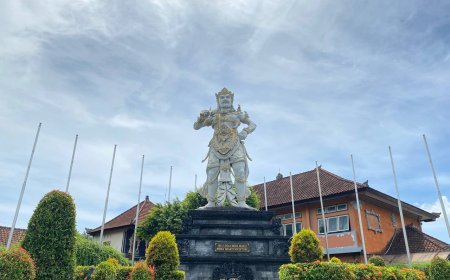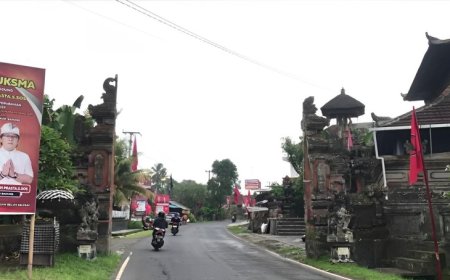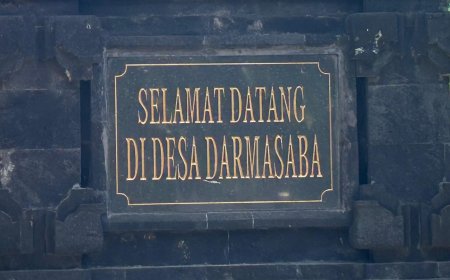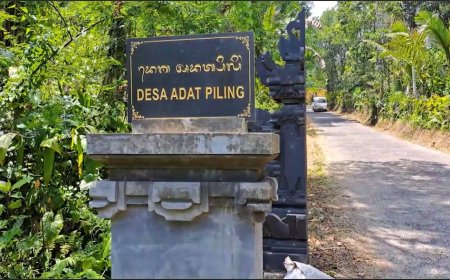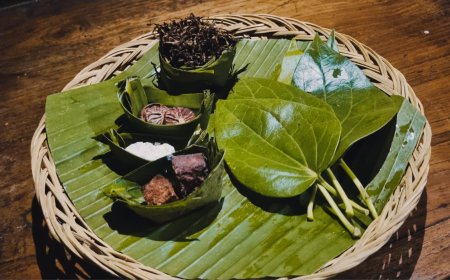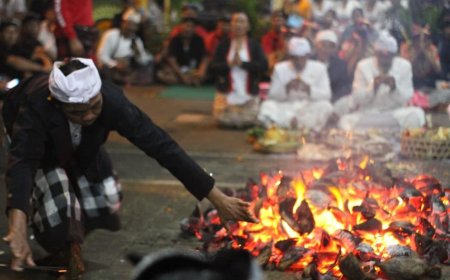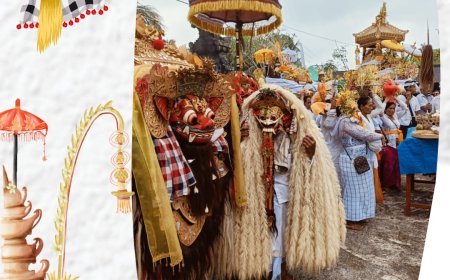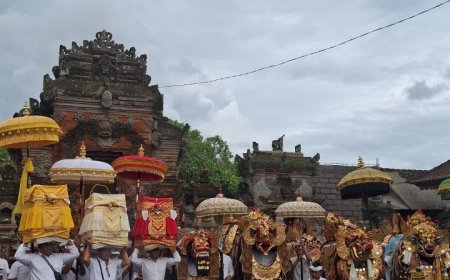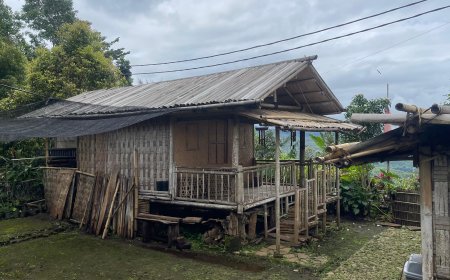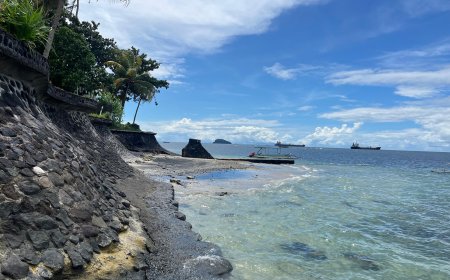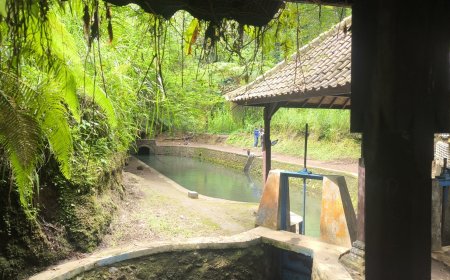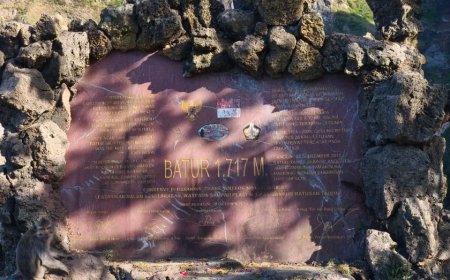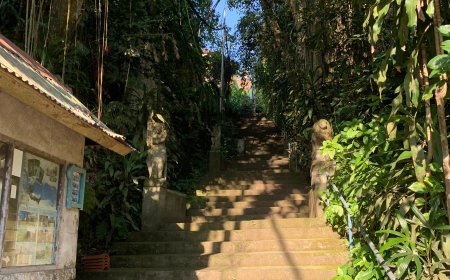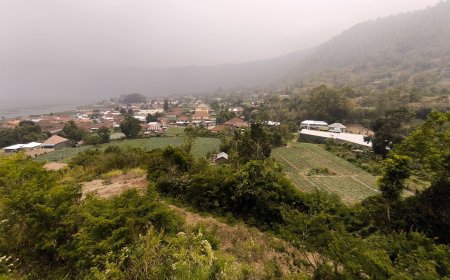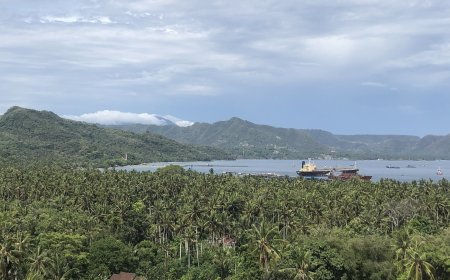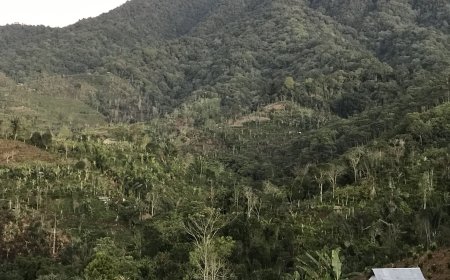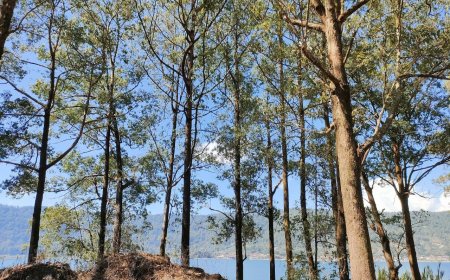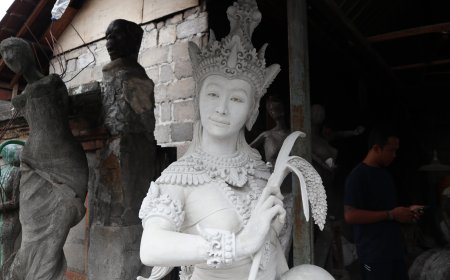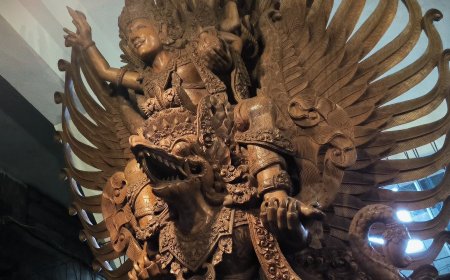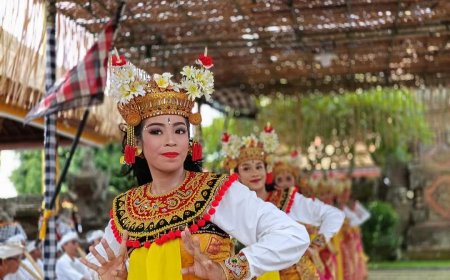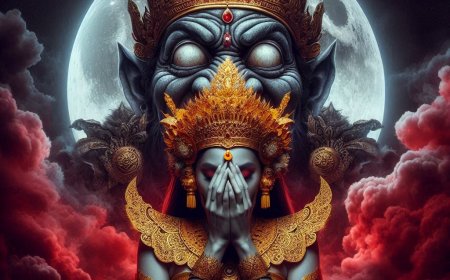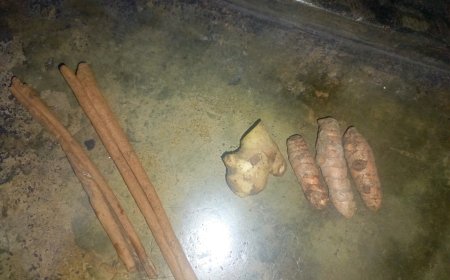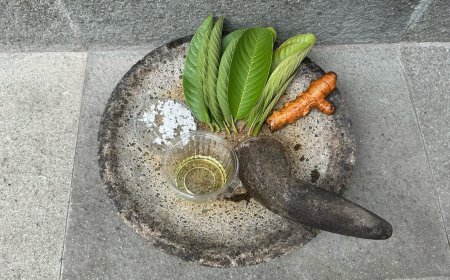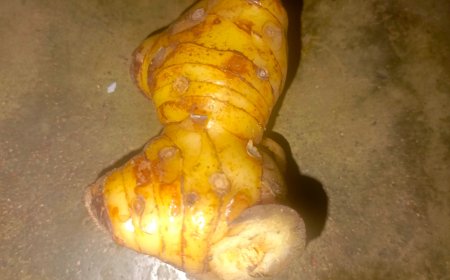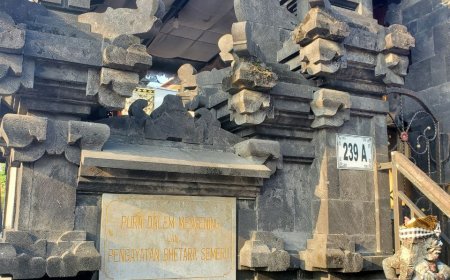Pura Dalem Kerangkeng: A Sacred Symbol to Calm Spirits and Maintain Harmony
Pura Dalem Kerangkeng is one of the unique temples in Nusa Penida, Bali, imbued with profound spiritual significance and local traditions. Nestled in a serene location, this temple serves as a primary destination for Hindu devotees to perform self-purification rituals and seek forgiveness for their sins. The name "Kerangkeng" symbolizes the sacred function of this temple as a place to restrain and control negative energies, particularly from spirits believed to carry harmful influences.

This temple features distinctive Balinese architecture that reflects traditional and spiritual values. Every corner is adorned with ornaments symbolizing the connection between humans, nature, and God. The temple grounds are designed to create a serene atmosphere, allowing visitors to feel a closeness to the surrounding spiritual energy. In addition, Pura Dalem Kerangkeng plays an important role within the temple complex of Nusa Penida, often visited for major rituals such as purification ceremonies and the cleansing of negative energy. This makes the temple not only a place of worship but also a spiritual center that preserves the harmony between nature and humanity.
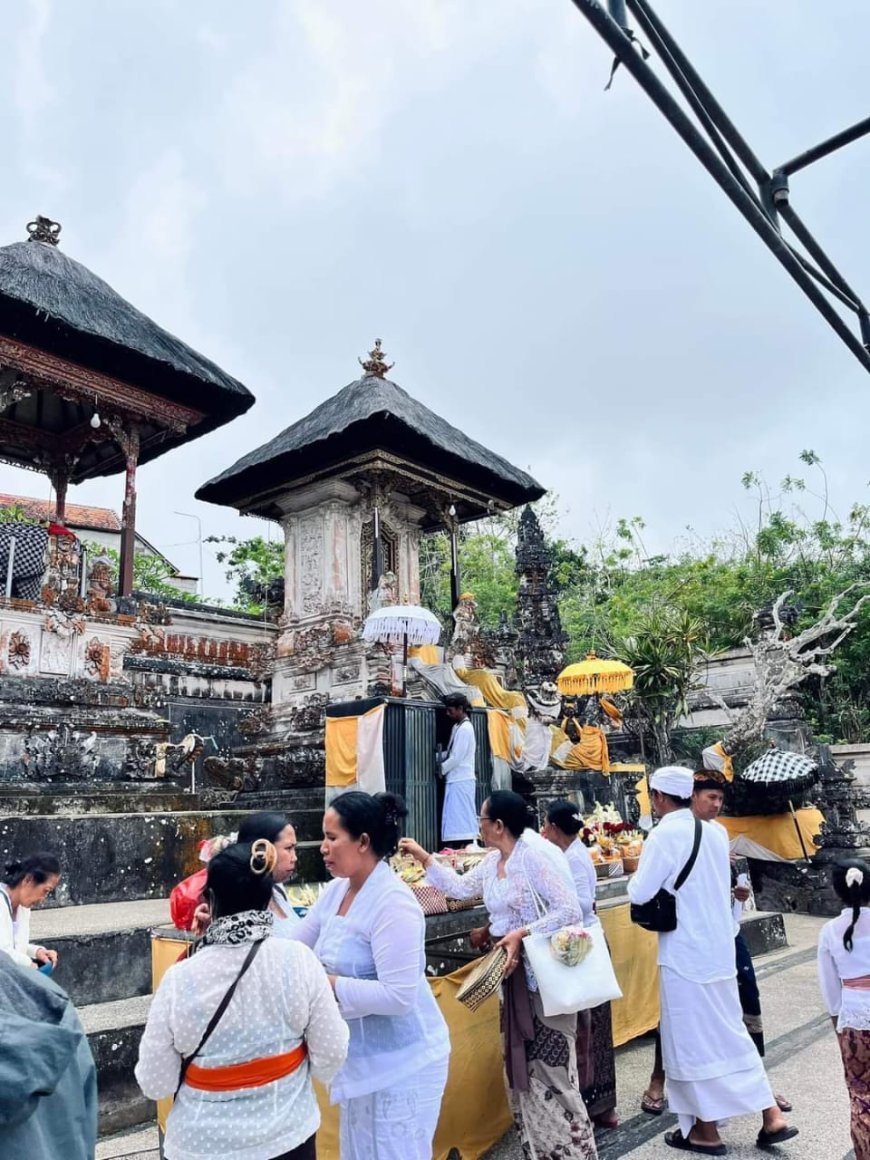
Temple Area (Source: Personal Collection)
Pura Dalem Kerangkeng is often the site for soul purification ceremonies and forgiveness of sins. The local community believes that the rituals performed at this temple can help cleanse the soul and bring peace to lost spirits. This place is also considered to have a strong spiritual energy, making it an important destination in the series of spiritual journeys in Nusa Penida.
As part of the Balinese Hindu tradition, Pura Dalem Kerangkeng represents the concept of Tri Hita Karana, which is the harmony between humans, nature, and God. The presence of caves and spiritual elements in this temple demonstrates how the Balinese people honor the relationship between the physical and metaphysical worlds.
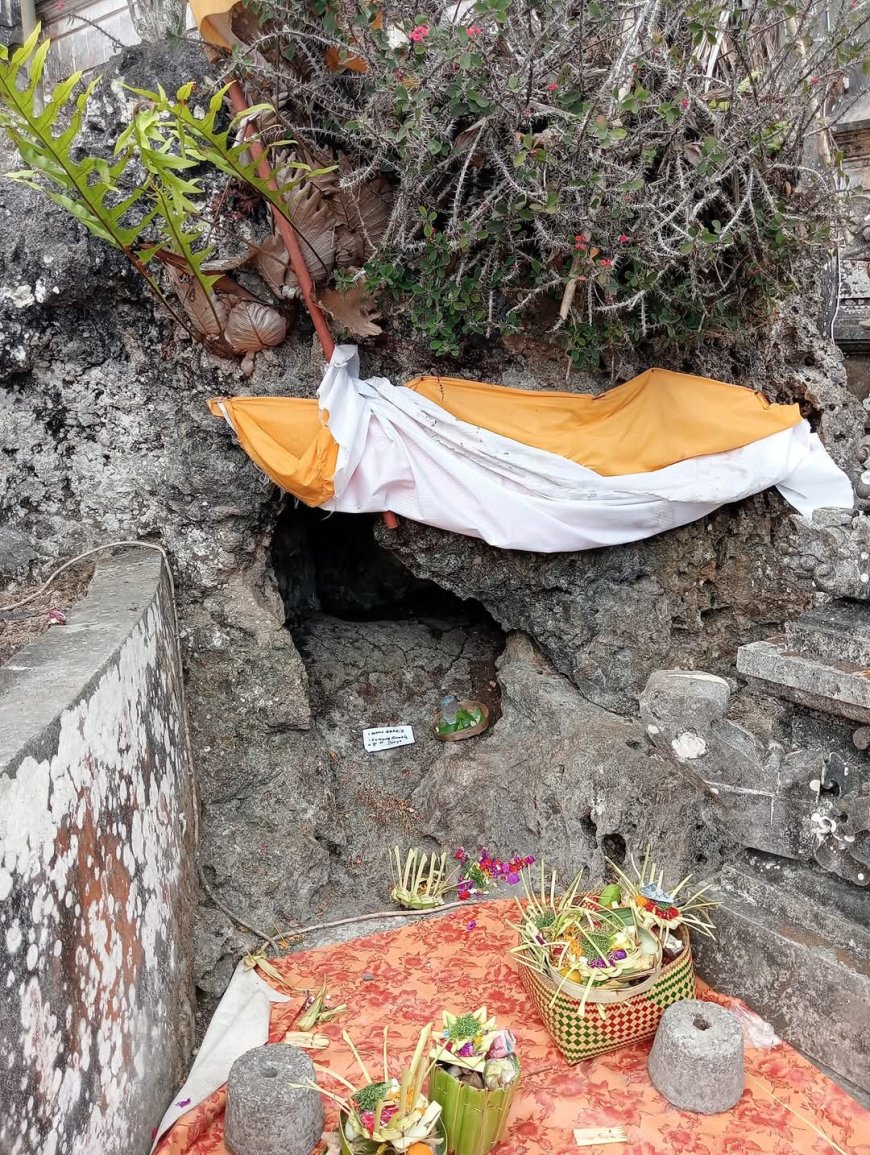
Kerangkeng Cave (Source: Private Collection)
One of the main attractions of Pura Dalem Kerangkeng is the cave located within the temple grounds. This cave is believed to serve as a "spiritual prison" for the souls of humans who committed evil deeds during their lives. Inside the cave, there is a judgment table and a gavel, known as the "forgiveness table," symbolizing the process of judgment and purification of sins. This cave not only serves as a place for rituals but also holds deep spiritual stories.
According to local belief, rituals performed in this cave can help cleanse the souls from sins and guide them toward peace. The dark and quiet structure of the cave adds to the sacred atmosphere, giving the impression that this cave truly serves as a bridge between the human world and the spiritual realm.
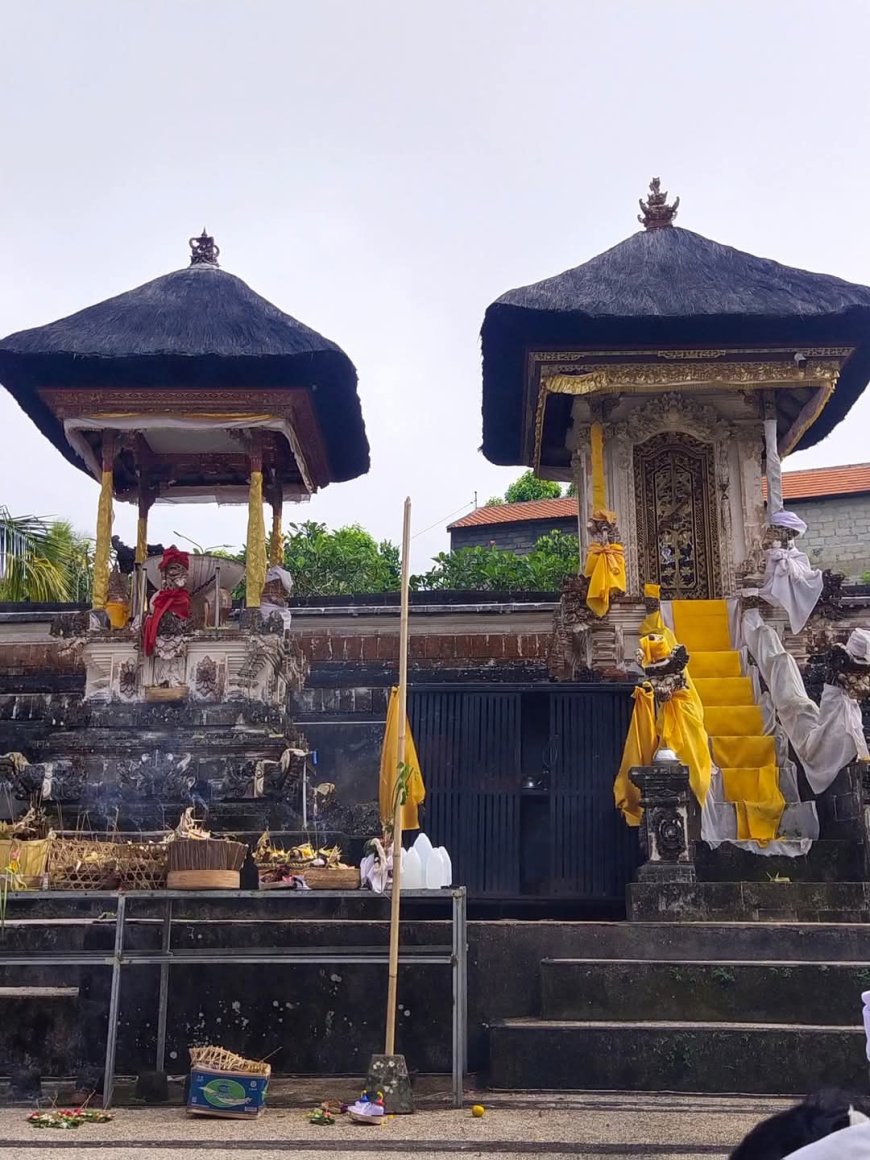
Heaven and Hell Shrines (Source: Private Collection)
At Pura Dalem Kerangkeng, there is a shrine that symbolizes two very important spiritual realms in Hindu teachings, namely heaven and hell. The shrine representing heaven is believed to be the resting place for souls that have lived a virtuous life and have attained eternal peace. On the other hand, the shrine representing hell is believed to be the place for souls that committed evil deeds during their lifetime and must undergo judgment and purification before they can achieve peace. These two shrines serve as symbols of the balance between good and evil, and as a reminder for Hindus to lead a life full of virtue.
The concepts of heaven and hell in Pura Dalem Kerangkeng are closely linked to the teachings of karma, which states that every good or bad action has spiritual consequences. These shrines emphasize the importance of living a life filled with virtue, as every action will determine the soul's fate after death. In this context, the temple serves not only as a place of worship but also as a profound spiritual reminder of the journey of life and divine justice, which is reflected in the afterlife.
